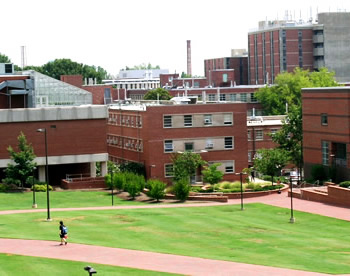True/False — Indicate “T” for true; “F” for false:
1. Odonata and Ephemeroptera are the only paleopterous orders.
2. Protura and Diplura are the only orders without compound eyes.
3. Diptera and Strepsiptera are the only orders with a single pair
of membraneous wings.
4. Embioptera and Lepidoptera are the only orders with tarsal silk
glands.
5. Hymenoptera and Isoptera are the only orders of social insects.
6. All Orthopteroids are herbivorous.
7. All apterygote insects are ametabolous.
8. All exopterygote insects are hemimetabolous.
9. All neopterous insects are holometabolous.
10. All hemipteroids have piercing-sucking mouthparts.
11. The diagram below illustrates an adult female snow scorpionfly. Mark
and label the following parts of the body:
A. Scape
B. Epiproct
C. Tibia
D. Pronotum
E. Metepimeron

Multiple Guess: Choose the BEST answer.
12. In a normally developing insect, a high titer of juvenile
hormone should NOT be found:
A. While it is molting from first to second instar.
B. Before it becomes a pupa.
C. When it is a sexually mature adult.
D. In an adult male.
13. Which part of a molt does NOT occur during apolysis?
A. Formation of new epicuticle
B. Resorption of old endocuticle
C. Formation of new quinone crosslinkages
D. Activation of molting fluid
14. In an insect egg, the embryo begins to develop as soon as:
A. Cells reach the oosome.
B. The zygote nucleus starts to divide.
C. Hormones are secreted by the activation center.
D. Yolk contracts from one side of the egg.
15. Which order would a "lumper" NOT include in the Orthoptera?
A. Mantodea C. Grylloblattodea
B. Phasmida D. Isoptera
16. Which of these characteristics do insects and crustaceans have
in common?
A. Mandibulate mouthparts C. Jointed legs
B. Open circulatory system D. All of these
17. In an obtect pupa:
A. The insect is surrounded by a silken cocoon.
B. The larval exoskeleton becomes a puparium.
C. The insect's body forms a chrysalis.
D. All of these.
18. Which structures would be found in an eruciform larva, but NOT
in a scarabaeiform larva?
A. Prolegs C. Compound eyes
B. Mandibles D. All of these
19. Which order is most closely related (phylogenetically) to the
Neuroptera?
A. Mecoptera C. Psocodea
B. Blattodea D. Odonata
20. Which class is most closely related (phylogenetically) to the
Insecta?
A. Xiphosura C. Myriapoda
B. Crustacea D. Arachnida
21. Which group of insects has simple metamorphosis?
A. Fleas C. Beetles
B. Flies D. Bugs
22. Insect blood does NOT:
A. Clot C. Flow through the wings
B. Contain antibodies D. Transport hormones
23. In insects, the first pair of post-oral appendages are called
mandibles. What are these appendages called in Arachnids?
A. Maxillae C. Walking legs
B. Antennae D. Chelicerae
24. Which insects do NOT damage horticultural crops (as immatures)?
A. Sawflies C. Whiteflies
B. Butterflies D. Caddisflies
25. Which insects would be classified as decomposers?
A. Termites C. Thrips
B. Crickets D. Stoneflies
26. Which sclerite lies below the epistomal suture?
A. Frons C. Clypeus
B. Labrum D. Gena
Matching:
Match each order with the correct name for its first-stage immature.
27. Neuroptera A. Triungulin
B. Naiad
28. Collembola C. Larva
D. Young
29. Dermaptera E. Nymph
30. Plecoptera
31. Strepsiptera
32. Precocene (extracted from certain plants) is a compound that
blocks or inhibits juvenile hormone activity in insects. What
effect(s) would you expect from this compound's activity in
the following insects:
A. Grasshopper nymph
B. Fly maggot
C. Adult beetle
Short Answer:
Describe: A. Where you would find this structure and
B. What is its principle function
33. Micropyle
34. Furcula
35. Tentorium
36. Haltere
37. Hypopharynx
38. How does the structure of the endocuticle differ from that of
the exocuticle?
39. How does the developmental fate of endoderm differ from that of
ectoderm?
40. How do the wings of a beetle differ from those of a grasshopper?
41. How do the orthopteroids differ from the hemipteroids?
42. How do lobsters and shrimp differ from the insects?
43. Use the keys for "Source", "Structure", and "Function" to
complete the blanks in the following table:
Hormone Source Structure Function
-------------------------------------------------------------------
Ecdysteroids _______ _______ _______
Eclosion Hormone _______ _______ _______
Bursicon _______ _______ _______
Juvenile Hormone _______ _______ _______
Brain Hormone _______ _______ _______
-------------------------------------------------------------------
Source: Structure: Function:
A. Ventral ganglia A. Peptide A. Trigger ecdysis
B. Corpora allata B. Terpene B. Trigger apolysis
C. Corpora cardiaca C. Steroid C. Inhibit development in
D. Prothoracic gland D. Amine imaginal discs
D. Control activity of
prothoracic glands
E. Stimulate tanning
Give TWO different common names for insects in each of these orders:
44. Orthoptera: A. B.
45. Hymenoptera: A. B.
46. Zygentoma: A. B.
47. Neuroptera: A. B.
48. Hemiptera: A. B.
Essay
49. Explain how insect wings and the mechanics of flight have
changed through natural selection to become more efficient
in the higher orders.


